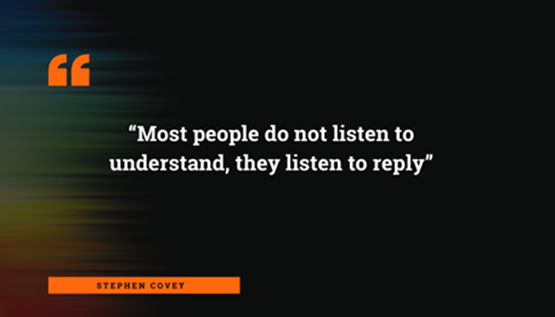Five Tips to Encourage your Team to Share their Ideas
A common complaint by business leaders on our programs is that they often feel that too many decisions rest with them or the senior leadership team and that whilst people are often quick to complain, they are usually not as forthcoming with their ideas or suggestions for improvement.
The often hierarchical nature of businesses can itself present a barrier to ideas being shared as explained by Matthew Syed in his book ‘Rebel Ideas’ as he described how teams behave when there is a dominance dynamic (i.e. someone is in charge):
“[employees] don’t say what they truly think, but what they think the leader wants to hear. They echo his thoughts and anticipate his feelings. There is an absence of rebel ideas”
So how can businesses create an environment where employees are actively encouraged and supported to collaborate and share their ideas across the organisation?
1. Be open and say that you don’t have all the answers…
People often assume that those in leadership positions have the answers to every question, problem or challenge. However, from our own experience, we know that over 90% of the leaders who have taken part in our leadership program were lacking in confidence. It is important therefore for leaders to acknowledge when they do not know the answer, and to view an important part of their role as identifying the problem and encouraging others to help solve it.

Michael Abrashoff took over as Commander of the USS Benfold and transformed it from the worst performing ship in the US Navy to the best in only a few years. He's a renowned speaker and has authored several books including ‘It’s Your Ship: Management Techniques from the Best Damn Ship in the Navy’. He believed that the key to leadership was understanding yourself first and then using that knowledge to shape the organisation, and was open about the fact that he felt that the crew had the best ideas on how to run the ship using the phrase ‘It’s your Ship’.
“I began with the idea that there is always a better way to do things, and that, contrary to tradition, the crew’s insights might be more profound than even the captain’s.”
Michael Abrashoff
2. Frame the problem and ask good questions
Don’t just ask for your teams to ‘share their ideas’ as this question lacks clarity and can cause confusion. This can either lead people to clam up because they are not entirely sure what you are looking for or it could encourage a stream of ideas that aren’t particularly thoughtful or useful. Frame the problem in a clear and productive way and set out the question in a way that sends people down a constructive path. Explain that you are looking for their thoughts on the everyday challenges and issues that they face in their role and their ideas on what would make it better.
Abrashoff questioned everything - when someone came to him for his sign off on something his first question was always, “Why do we do it this way?” and if there was no better answer than “because we’ve always done it this way”, he would encourage them to find out if there was a better way to do it. Before long they were coming to him with ideas for how they could do things better and he created a culture in which they questioned everything and people were encouraged to look for new and better ways of doing business.
3. Really listen to what they have to say
It is sometimes taken for granted that we know how to listen effectively, although it is not actually a skill that is often taught in school. We may have two ears and most of us can hear well, but ‘hearing’ is not the same as ‘listening’.
As leaders, we are adept at tackling challenges, making decisions and getting things done which can often lead us to trying to find solutions when our people come to us with their problems. As a result, we don’t always ‘listen’ to what they are saying - as Stephen Covey said:

The ability to listen effectively is a key ingredient in leadership success. It allows us to demonstrate to others that they are valued and understood, helps to build trust and commitment and develop strong working relationships with those around us.
4. Acknowledge and recognise their ideas
When someone has been ‘brave’ and has put their head above the parapet and shared their thoughts, then it is a fundamental requirement that leadership acknowledges that, thanks them for their contribution and explains that they will let them know what happens next.
Too often (good) ideas are put forward only for the business to forget about them, not explain what happened next.
So, make sure that you not only initially show that you have listened by thanking them for their idea but also subsequently share feedback on the reasoning if the idea cannot be progressed or give recognition if it has been acted on. This could include taking them to one side to privately express your gratitude, using your communication network to make the team / organisation aware of the idea that has been implemented or sending a handwritten thank you card.
5. Provide a channel for sharing ideas
Some people are reluctant to speak up in group settings such as meetings. In such cases, inviting them to share their thoughts and concerns with you privately may provide more valuable insights. Giving people time to reflect and consider the question rather than putting them on the spot can also yield better results.
Anecdotally we have not heard positive things about suggestion boxes and perhaps the challenge lies in the lack of clarity around what ‘suggestions’ are being asked for as well as the need to make sure that individuals are given responsibility for regularly emptying the box and taking the appropriate action.
Digital systems which make it easier for individuals to share their ideas in real time as well as ensuring that all ideas can be captured, stored and deal with, can be invaluable.
One business who has used such software is Forge Motorsport as their Managing Director, Pete Miles explains, “We introduced the QuoLux™ MAD ideas system, encouraging colleagues to put forward their suggestions to improve what they do, their area of work and the wider business and it is truly Making A Difference (MAD). In the first 8 weeks of its launch we had 72 ideas from two-thirds of the workforce. That’s engagement. That’s improvement. Ordinarily, I wouldn’t have heard 90% of those ideas. Every idea is being captured and everyone giving a suggestion receives an immediate ‘Thank you’. Every week our Continuous Improvement (CI) team goes through all new ideas and provides feedback as well as creating status reports on all ideas for everyone to ask at any time.”
“The MAD ideas system has been revolutionary in the way our teams suggest and implement ideas throughout the business. Everyone now has a voice that is being heard, and that is Making A Difference.”
Ryan Maycroft and Jon Hill from the Forge Motorsport Continuous Improvement Team
If you'd like more information on our DigiTools and MAD Ideas System, please click to read more.
Keep up-to-date on the latest leadership and management tips by signing up to our weekly blog here